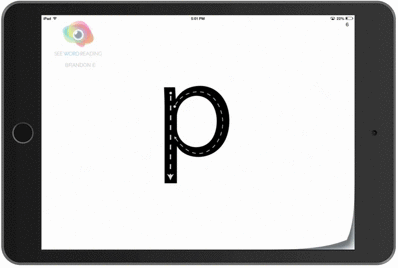Guest Expert Post
Storytime at Home: Top 10 Read Aloud Strategies for Parents of Young Children

Guest Post By Allison Breit-Smith, PhD University of Cincinnati
In the past, teaching children the steps to learn to read at home was discouraged. It was feared that bad habits would be taught that would have to be undone. Today, teaching reading readiness at home is an entirely different story – especially now during the COVID 19 crisis, it is essential to teach reading readiness at thome.
From the emergent literacy perspective, it is beneficial for children to observe and interact with more competent readers and writers early. Also, they are encouraged to engage in their own exploratory reading and writing.
Reading with your child is one of the best ways to build a lifelong love of learning. And keep in mind that reading a book with your child is MUCH more than reading the words on the page. Be sure to have fun. With this in mind, here are 10 read aloud strategies to help you and your kids learn through exploration.
10 Reading Strategies:
#1: Follow your child’s interests. At the end of the day, it’s not important to read all of the words on the page or in the book. If you are a less than perfect reader, don’t worry. It is more important to be warm and responsive. Keep in mind that the balance of participation will shift over time based on your child’s age and abilities. When your child is very young, from birth to 12 months, you will do most of the talking. Just pointing out pictures and saying the words is helpful for children this age. From 12 months to 15 months, consider asking questions but still assume that you will carry the dialog. After 15 months, reading stories aloud will become even more enjoyable with more participation from your child when they answer questions. From here you are off to the races. Keep probing for their interests and finding new books.
#2: Comment and wait. To increase interaction (and fun) during your reading time, be prepared to wait. Try commenting on the pictures, the words in the book, or even the character’s feelings. Try phrases like: • I notice. . . • I see. . .
#3: Ask open-ended questions and wait. Open-ended questions encourage your child to respond to the book in his or her own words. They often include a focus on the pictures and work well for books that have rich, detailed illustrations. Try using “w” words such as who, what, why, when and where to start. If all else fails, help your child answer the questions. Give hints. Give options. Or answer the question yourself after a suitable pause or if your child seems stumped or frustrated. Try phrases like: • What do you see on this page? • Why do you think. . . ?
#4: Encourage your child to “read” everything. 2 Use a familiar book and have your child read to you. Encourage your kids to read out in their environment, looking at things like print on cereal boxes, soft-drink cans, road signs and logos. Often this is the first type of print children recognize because context and situation gives clues to print’s meaning. Be sure to praise these first steps to reading! Also help your child see that words convey meaning and can be used to get things done in everyday life.
#5: Talk about the sequence of events in a story. Have conversations with your kids about what happens first, next, then last. See if they can guess why things happen in stories.
#6: Act out stories after you read them. This is a fun way to bring books to life. After reading a story, see if your child can act out the parts.
#7: Talk about the meaning of words. Point to words as you read them. Talk about what some of the words mean on the page if they are not immediately clear. Connect the word to your experiences.
#8: Share book concepts with your young reader. Point to the print on the page. Show how the sentences move from left to right and how we read a book from front to back. Talk about the cover of the book. Share with your child how the author’s name and the title are there.
#9: Write names and letters from the book. From early scribbles to eventual printing of letters, get out paper and pens and go to town having fun and exploring. Be sure to encourage participation.
#10: Talk about letters and sounds. To help with the awareness of individual phonemes or sounds in words try a phoneme isolation exercise such as this: • I’m going to say three words. I want you to listen for the word that begins with the /s/ sound: table, sun, math. Which word begins with the /s/ sound? • I’m thinking of someone’s name. I’m going to say some sounds and I want you to put the sounds together to figure out the name: /p/ /a/ /m/. As your reader advances, move on to phoneme segmenting with questions such as this: • I’m going to say someone’s name and I want you to break apart the name into the beginning, middle and ending sounds. Or try phoneme manipulation with questions such as this: • Could you say “an.” Try saying it again and add /f/ to the beginning. • Could you say “fan.” Say it again but don’t say /f/. Substitution: Say “fan.” Say it again but say /t/ instead of /f/.
About the Author Dr. Allison D. Breit-Smith Allison D. Breit-Smith, Ph.D., is an Associate Professor of Literacy in the College of Education, Criminal Justice and Human Services, in the School of Education at the University of Cincinnati. Breit-Smith brings a breadth and depth of literacy experiences and early childhood portfolio work to the See Word Design team. She oversees the fidelity of the work of the graduate assistants who collect data for See Word Design research and testing. Breit-Smith has been instrumental in ensuring the platform has been designed and developed to meet the needs of teachers.
Get Help At Home:
See Words: Home incorporates proven methods to help new and/or struggling readers learn the basic fundamentals of reading. Or try our newest product: See Words: Anywhere for help for all ages.
Learn More at: https://www.see-words.com.

Want a Step-by-Step Easy Path to Learn to Read?
See Words: School lays out the fundamental steps in 14 engaging lessons using proven multi-sensory methods and phonics. Download the suite of apps from the Apple App Store now.